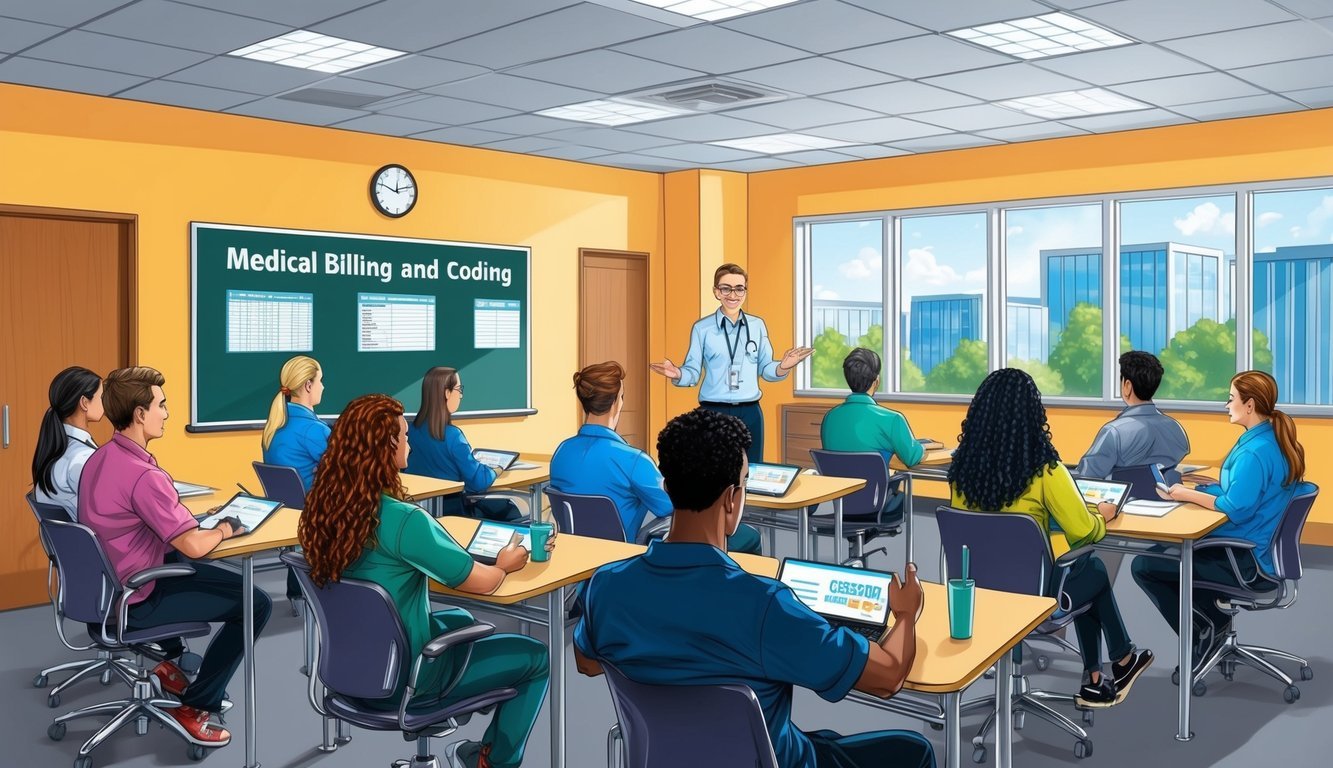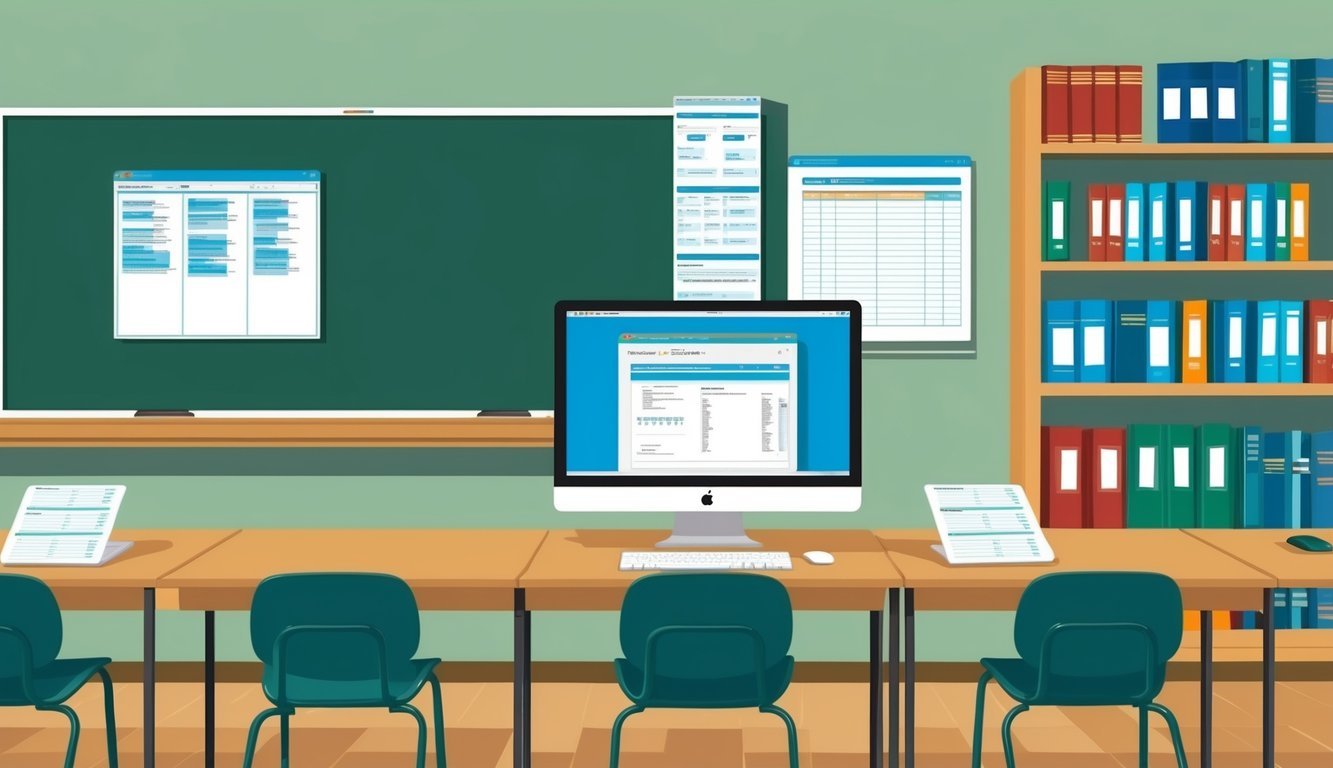In today’s rapidly evolving healthcare industry, trained professionals in medical billing and coding are in high demand.
This field plays a crucial role in ensuring that healthcare providers are accurately reimbursed for their services. Taking a free medical billing and coding course can be your first step towards a rewarding career.
It allows you to explore whether this path aligns with your skills and interests.
Several online platforms offer valuable resources that can help you gain essential knowledge in medical billing and coding at no cost.
Courses typically cover foundational topics such as medical terminology and coding systems. Exploring these available options can offer a flexible way to start your journey in a field that impacts healthcare accessibility and efficiency.
If you’re considering a career change or looking to expand your skill set, free courses are an excellent way to determine if medical billing and coding is right for you.
By investing your time in these educational resources, you can build a solid understanding of the principles that govern medical billing and coding practices.
This sets the stage for future success in this important sector.
Understanding Medical Billing and Coding
Medical billing and coding are essential components of the healthcare system, ensuring accurate communication between healthcare providers and insurance companies.
This section explores the basics of medical billing, the fundamentals of coding, and the critical role coding plays in the healthcare industry.
Basics of Medical Billing
Medical billing involves the process of submitting and following up on claims with health insurance companies.
It begins with a healthcare provider delivering services to a patient.
The provider collects necessary data, including medical codes and patient information, to create a claim.
The claim is then sent to the insurance company for reimbursement.
Key elements include:
- Patient Information: Demographics and insurance details.
- Procedure Codes: Codes that describe the services rendered.
- Diagnosis Codes: Codes identifying the patient’s condition.
Correct coding is vital for obtaining maximum reimbursement while avoiding denials.
For more information, you can explore free medical billing courses.
Fundamentals of Medical Coding
Medical coding translates healthcare services, procedures, and diagnoses into universally accepted alphanumeric codes.
You utilize various coding systems, including ICD-10 for diagnoses and CPT for procedures.
Here’s a brief overview of essential coding components:
| Coding System | Use |
|---|---|
| ICD-10 | Diagnosis coding |
| CPT | Procedure coding |
| HCPCS | Supplies and services coding |
Accurate coding ensures compliance with medical terminology and regulations.
It directly impacts a facility’s revenue cycle by determining reimbursement levels from insurance companies.
For a deeper understanding, resources like Coursera’s Medical Billing and Coding Essentials can be beneficial.
Role of Coding in the Healthcare Industry
Coding plays a critical role in the healthcare industry, providing a standardized language for health information.
As a healthcare professional, accurate coding is essential for effective billing, research, and public health reporting.
Key functions of coding include:
- Facilitating Communication: Between providers and insurance companies.
- Data Analytics: Assisting in tracking healthcare trends and costs.
- Compliance: Ensuring adherence to laws and regulations.
By maintaining accurate coding practices, you help safeguard your organization’s revenue, contribute to quality patient care, and support overall healthcare operations.
Further insights can be found in resources such as Forbes’ guide to free online courses.
The Course Structure and Content

In free medical billing and coding courses, you’ll find well-structured learning modules accompanied by various assignments and activities.
These elements ensure that you gain comprehensive knowledge and practical skills.
Learning Modules
The learning modules are designed to provide a solid foundation in medical billing and coding.
Typical modules include:
- Anatomy and Physiology: Understanding the human body is crucial for accurate coding.
- Coding Essentials: You will cover essential coding principles, including ICD-10 and CPT codes.
- Insurance and Billing Basics: Learn the roles of different insurance types and the billing process.
Each module may feature video lectures, reading materials, and quizzes.
For instance, Coursera’s Medical Billing and Coding Essentials offers detailed insights into these topics.
The modules are usually self-paced, allowing you flexibility in your studies.
Assignments and Activities
Assignments and activities reinforce your understanding and practical skills.
Common types of assignments include:
- Case Studies: Analyze real-world scenarios to apply coding knowledge.
- Quizzes and Self-Tests: Gauge your comprehension and retention of course materials.
- Practical Coding Exercises: Work on coding programs to practice accuracy.
These tasks help solidify your knowledge of medical billing and coding essentials.
Engaging in these activities prepares you for actual job responsibilities, making them integral to the learning experience.
Many courses offer free downloadable resources for additional practice, enhancing your skill set even further.
Getting Certified
Obtaining certification in medical billing and coding is essential for advancing your career.
It demonstrates to employers your commitment to the field and your expertise in the necessary skills.
Certification Exams Preparation
Preparation is crucial for successfully passing certification exams.
Start by familiarizing yourself with the exam content outlines provided by certifying bodies such as AAPC.
You can access these resources on their official website.
Consider enrolling in online preparatory courses that offer practice exams and study materials.
Free platforms, such as AMCI’s Free Online Medical Coding Course, can also provide foundational knowledge.
Establish a study schedule that allows for consistent review of coding guidelines, terminology, and regulations.
Utilize flashcards, online quizzes, and discussion groups for interactive learning.
Essential Coding Certifications
There are several certification options available, each serving distinct purposes.
Here are some key certifications to consider:
| Certification | Focus Area | Certifying Body |
|---|---|---|
| Certified Professional Coder (CPC) | General coding and billing | AAPC |
| Certified Billing and Coding Specialist (CBCS) | Billing-specific skills | NHA |
| Certified Coding Specialist (CCS) | Hospital and facility coding | AHIMA |
Each certification requires specific exams and prerequisites.
For instance, the CPC requires a solid understanding of various coding systems.
Obtaining a certificate of completion from a recognized program can also enhance your qualifications.
Research each option to determine which aligns best with your career goals.
Enrollment and Advancement

Enrolling in a free medical billing and coding course provides you with the foundation needed to excel in this field.
Understanding the admission process, specialization opportunities, and how to advance your career are crucial for maximizing your educational experience.
Admission Process
To enroll in a free medical billing and coding course, you typically need to meet certain prerequisites.
These can include a high school diploma or equivalent.
Most programs also require you to fill out an application form and provide your contact details.
Some courses may request a personal statement or a resume, detailing your interest in the healthcare industry.
Be prepared to demonstrate your commitment and motivation to pursue this career path.
It’s important to check for available options for financial aid since some programs may offer assistance for additional expenses like textbooks or materials.
Specialization Opportunities
Once you complete a basic medical billing and coding course, you might want to pursue specialization opportunities.
Specializing can enhance your marketability and open doors to specific sectors within healthcare, such as outpatient coding or health information technology.
Many programs offer additional certificates in specialized areas, such as coding for surgical procedures or advanced billing practices.
By adding specializations to your skill set, you can make valuable connections on platforms like LinkedIn, which can help you network with industry professionals.
Advancing Your Career
To advance your career after completing a free course, consider obtaining certifications like the Certified Billing and Coding Specialist (CBCS) or the Certified Professional Coder (CPC).
These certifications can significantly increase your job prospects and earning potential.
Networking is crucial—update your LinkedIn profile to reflect your new certifications and connect with professionals in the field.
Attend industry conferences and workshops to stay updated on best practices and emerging technologies.
Continuous learning will keep you competitive in this evolving industry.
Available Resources and Support
To succeed in medical billing and coding, utilizing available resources and support is essential.
You can take advantage of free online courses and join vibrant support networks to enhance your skills and knowledge in this field.
Free Online Learning Platforms
There are several platforms that offer free online courses in medical billing and coding.
These resources help you gain foundational knowledge and skills without incurring any costs.
Some notable options include:
| Platform | Course Offerings |
|---|---|
| Alison | Offers a diploma in medical billing and coding. |
| Coursera | Provides a course covering insurance billing and coding essentials. |
| Absolute Medical Coding Institute | Features free resources for coding practices. |
These platforms provide structured courses, quizzes, and additional materials to support your learning journey.
Topics may include procedural coding, patient care, and electronic health records, which are vital areas in the medical billing field.
Support Networks and Communities
Connecting with others in the medical billing and coding profession can greatly enhance your experience and growth.
Joining support networks and online communities allows you to share insights, ask questions, and network with other professionals in the field.
Online forums, such as LinkedIn groups, provide a platform for discussions around challenges and solutions related to coding and billing.
You can also find mentorship opportunities within these networks.
Organizations like the AAPC (American Academy of Professional Coders) offer resources, newsletters, and local chapter meetings to help you stay informed and connected.
These networks can become invaluable as you navigate your educational and professional path in medical billing and coding.

